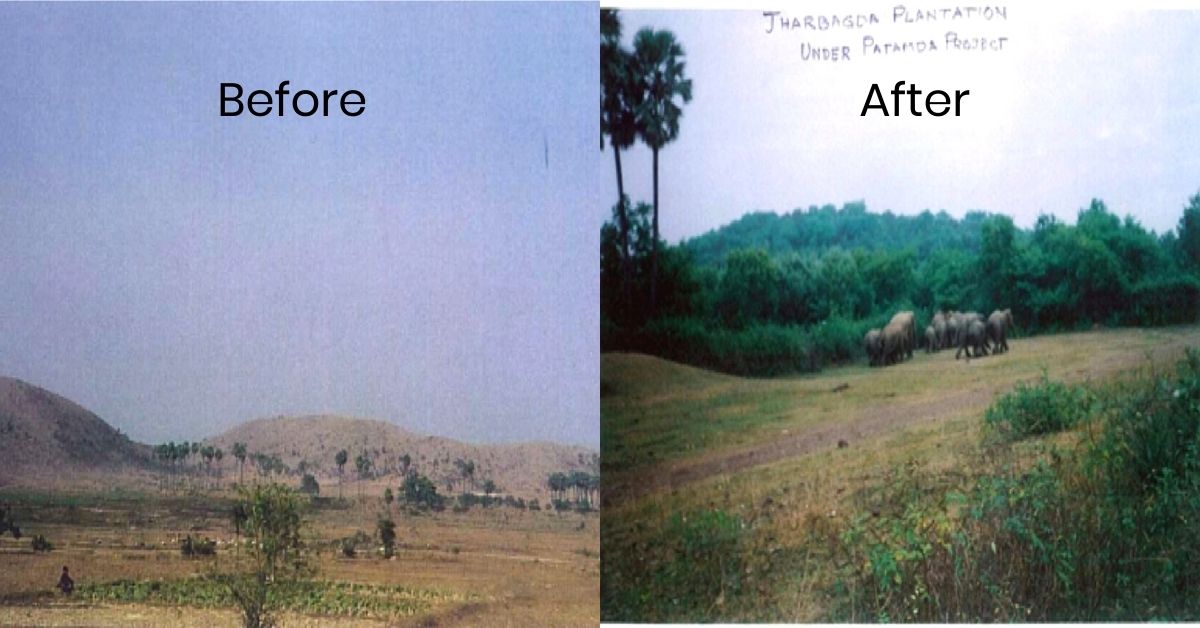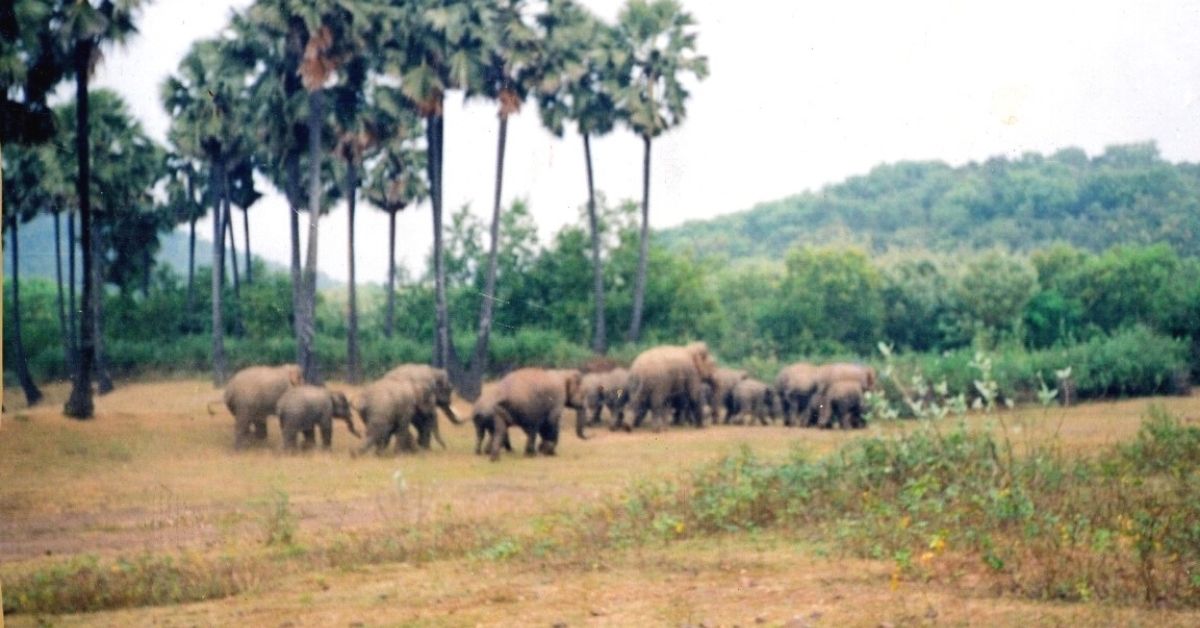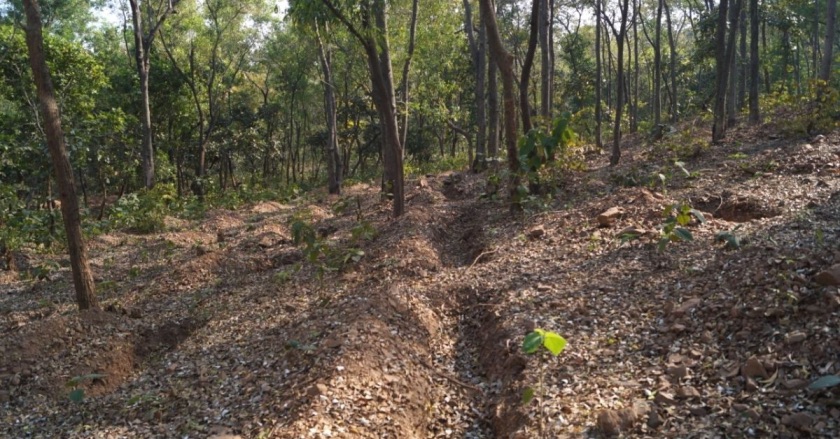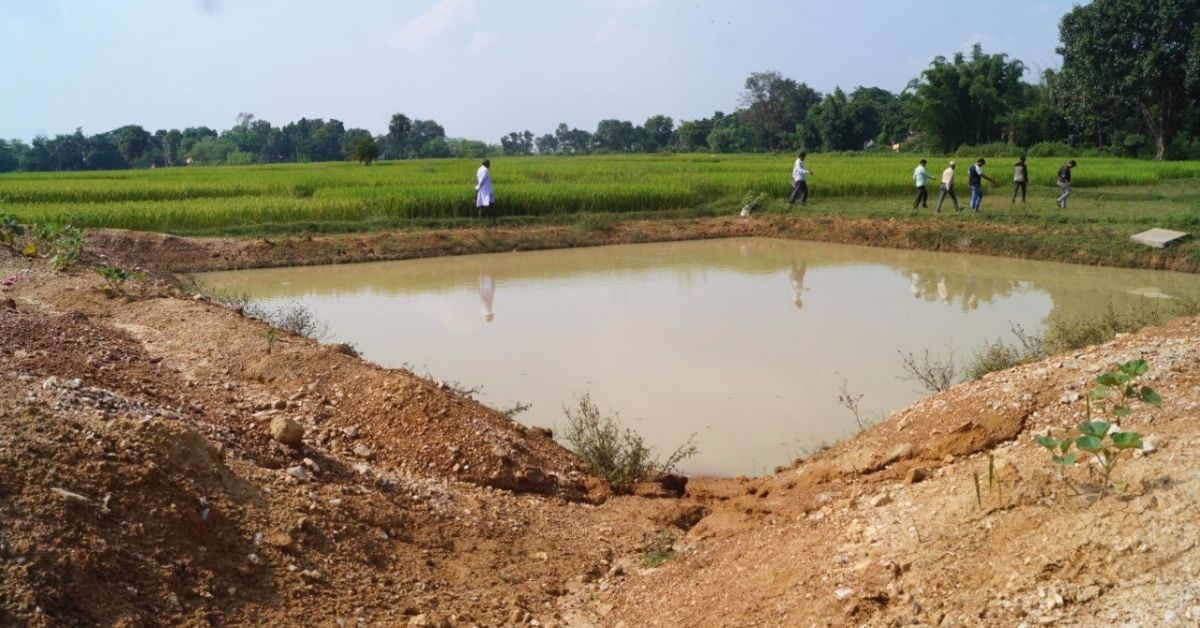Purulia Villages Turn Barren Mountain Into Lush Forest in 20 Years, Solve Water Woes
In 1998, three villages in West Bengal's Purulia district planted 4.5 lakh trees to convert a barren mountain into a lush green forest

Up until 1997, a small hillock in Jharbagda village in West Bengal’s Purulia district had a single tree next to a small temple, which priests and a handful of locals would visit occasionally. The village, located about a 100 km from Jamshedpur, was surrounded by about 50 km of barren land and faced extreme weather conditions.
Owing to hot and humid winds blowing through the summer, harsh heat waves made human habilitation difficult for 300 families residing in the foothills of the mountain.
However, 22 years later, in 2020, the hill and its surrounding 387-acre land is covered with dense forest and is home to a variety of wildlife. Farmers can cultivate two crops per year to increase their income. This transformation in the landscape is credited to years of hard work and efforts the villagers in this area have undertaken.
From one tree to 4.5 lakh trees
The villagers started planting trees with the help of Tagore Society for Rural Development (TSRD), an NGO, and with years of persistent efforts, the hamlet now has cooler air, increased groundwater levels, and a prosperous future.

“Bohot, bohot jyada garmi tha (It used to be very, very hot),” says 50-year-old Sujit Mohanty, a farmer who owns 3.5 acres of land. He adds that rocks used to emit heatwaves in the scorching summer heat, and the effects of this lasted till late at night, making it difficult to seek respite even after dusk.
“We never thought something could grow in this shallow land. About 60% of rainwater would run off the surface, and groundwater would never be replenished,” he recalls. Farmers in the area say unfavourable conditions limited their ability to grow cereals, pulses or paddy once a year.
In 1997, a team from TSRD visited the site and decided to start planting trees in the area. “We learned that the area had a forest a few decades before. But the zamindari system (a permanent settlement act introduced to collect tax from peasants) destroyed the environment,” says Badal Maharana, the NGO’s team leader.
Badal says that after multiple visits to analyse the soil, geographic conditions and the nearest availability of water, four categories of plants were identified that fit the geographic characteristics. “The decision was made to plant varieties that would bear fruits, and provide fuel, food and timber essential for the livelihood of the villagers,” he adds.
He says work began in 1998, with the NGO intending to plant 36,000 trees over the next five years in three blocks drawn in the vicinity. “We spent four years maintaining the trees and protecting it from external threats. The work of tree plantation continued over the years, and we planted 4.5 lakh trees of 72 different species. About 3.2 lakh survived. It was difficult to find water and provide enough of it at all times,” Badal says.
The trees were guarded by people to prevent the threat of damage or vandalism.
Wildlife finds a welcoming home

“We had only three villagers to help us plant the saplings during the initial days. They would often say that nothing could grow here, and that even if the plant survives, it won’t bear fruits and the plantation will soon be dry,” Badal says.
But as more trees started bearing fruits and flourished, more people joined the effort.
The hard work started showing results around 2007, when 11 elephants visited the site. “Migratory birds, snakes and small animals like rabbits also started visiting the area, but having elephants visit was exciting,” Badal tells The Better India, adding that this was an indication of how the environment in the village was becoming more welcoming to wildlife and biodiversity.
Since then, there have been sightings of the Indian bison, fox, and various other animals in the village. Nandalal Bakshi, treasurer of TSRD, says the forest is regenerating itself, and that 5.28 lakh trees were recently counted and registered.
During the plantation drives, villagers also dug trenches and carved gullies between rocks and boulders to arrest water and facilitate percolation. Natural structures to slow the speed of rainwater run-off were erected, allowing groundwater to recharge. A water pond was built for wild animals, and villagers were restricted from using it.
Community-managed forest resources

Apart from reviving the habitat, villagers also experienced benefits of the newly-developed green zone themselves. Nandalal says the dry land holds enough moisture for farmers to take a second cultivation in a year. “Groundwater levels have increased, making water accessible at 20 feet,” he says. The improvement has enabled villagers to install solar water pumps to extract water,” he says.
The combined efforts of the NGO and the villagers have helped a population of 30,000 people across 21 villages. Nandalal adds that a guard is hired for a few to guard the forest. “No trees are allowed to be chopped, and no forest resources can be accessed without permissions. A forest committee was formed by the villagers to regulate the use of resources,” he says.
He also says that only mature, dry or fallen trees are allowed to be carried out of the forest for firewood. “Every day, six women from different villages collect dry leaves as fuel if needed. Daily expenses on kerosene for cooking come up to Rs 10-20 a day. A recent study shows that the villagers have been able to save Rs 6 lakh by using natural resources,” he says.
With assured water supply at their disposal, the farmers in the village are working their way towards progressive farming.
A self-sustained village

Badal says many farmers are now practising farming in 100% of their landholding. “Earlier, farmers could only use some portion of the total land they owned, but now, they can utilise the entirety of it. The farmers are also working to increase crop intensity and achieve an output of 120 per cent, which is growing even further. Besides cereals and pulses, they’re also growing vegetables and breeding poultry and cattle for increased income,” he adds.
“The organisation has not planted any tree since 2006, after the funding ended. Over the last few years, the state government has come in support of the community efforts,” he says. Badal says the government now funds water conservation or other projects, while the NGO’s role involves planning and monitoring initiatives that will benefit villagers.
Sujit says the air has never felt cooler in the village. “There is plenty of oxygen from the forest, fresh air everywhere, and no hot air emanates from the rocky mountains. The villagers have prospered, and there is more room for experimenting in farming,” he says.
(Edited by Yoshita Rao)
If you found our stories insightful, informative, or even just enjoyable, we invite you to consider making a voluntary payment to support the work we do at The Better India. Your contribution helps us continue producing quality content that educates, inspires, and drives positive change.
Choose one of the payment options below for your contribution-
By paying for the stories you value, you directly contribute to sustaining our efforts focused on making a difference in the world. Together, let’s ensure that impactful stories continue to be told and shared, enriching lives and communities alike.
Thank you for your support. Here are some frequently asked questions you might find helpful to know why you are contributing?


This story made me
-
97
-
121
-
89
-
167













